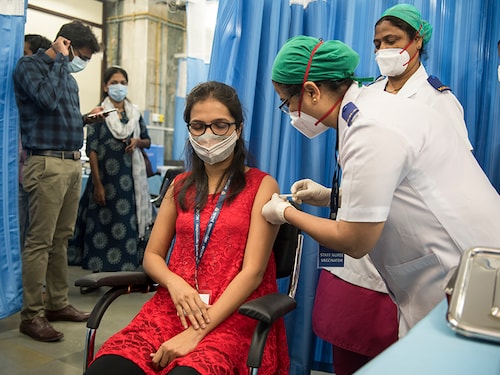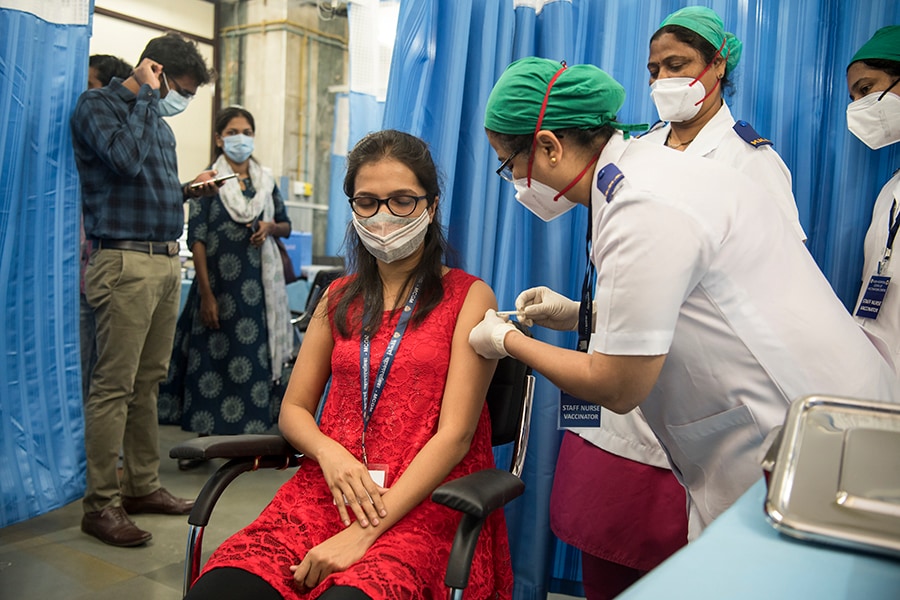India forecasted to grow 11.5 percent in FY22: Economic survey
Survey calls for healthcare regulator and asset review for banks; sustainable growth still a way away, say economists


 Image: Shutterstock
Image: Shutterstock
India’s finance ministry on Friday tabled the Economic Survey which highlighted the point that the country is expected to clock a contraction of 7.7 percent in its GDP for the year to March 2021, hurt by the ‘once-in-a-century crisis’ in the form of the Covid-19 pandemic.
The country has since seen a V-shaped recovery in several high-frequency economic indicators since the unlocking of the economy in June last year. The economic survey now projects the country to grow by 11.5 percent in FY22 with nominal GDP forecast at 15.4 percent.
The survey brought out the need for a healthcare regulator, an asset quality review check for banks and an aggressive disinvestment programme from the government.
Needed: Increased healthcare spend, a regulator
The economic survey had its first chapter focussed on how the government dealt with the pandemic. India imposed one of the most stringent lockdowns amongst the large economies of the world. The government then started the unlocking of the economy in five different phases, which has led to an improvement in people mobility and an improvement in the services sector and logistics activity.
“This [strategy] enabled flattening of the pandemic curve and thereby provided the necessary time to ramp up the health and testing infrastructure. Faced with enormous uncertainty, India adopted a strategy of Bayesian updating to continually calibrate its response while gradually unlocking and easing economic activity,” Krishnamurthy V Subramanian, India’s chief economic advisor to the government of India, said in the report.
The rate of infection in India has decreased significantly since a mid-September peak, with Union health minister Harsh Vardhan saying this week that “India has flattened its Covid-19 graph and 146 districts have reported no new case of the viral disease in the last seven days.”
Armed with data and the experience of battling the pandemic, the economic survey report stressed the need for a sectoral regulator that undertakes regulation and supervision of the healthcare sector.
Reviving growth, rising debt concerns
While the government is confident that the V-shaped recovery in India’s economy will sustain, economists Forbes India spoke to suggest that there is a need to wait for a few more quarters to get a better indication of whether growth will sustain into 2021 and 2022.
“While there has been a significant recovery in growth from previous quarters, we need to wait for a few more quarters to understand if the growth is meaningful and sustainable,” says Siddhartha Sanyal, chief India economist at Bandhan Bank. “The hand of support from policy makers should not be taken away from over the heads of the bottom of the pyramid and small businesses which have been the hardest hit.”
Some consumer goods, automobile, and technology companies have reported improved earnings growth from the September-ended quarter, but there have also been concerns in the Q3 earnings for some of the large banks, in the form of weakening asset quality.
The Reserve Bank of India has improved its economic growth forecast for the year, lowering its forecast to a 7.5 percent contraction for the year ending March 2021, from an earlier 9.5 percent.
India’s economy contracted 23.9 percent in the June-ended quarter and about 7.5 percent in the September-ended quarter. Economists expect business activity and growth forecasts to improve in the Q3 and Q4FY21 quarters.
Abheek Barua, chief economist at HDFC Bank, says, “There is still a gap between the pre-pandemic and the projected post-pandemic growth. The difference in the output levels between both levels is about 8 percent.” We have climbed back after falling off the cliff but even with this recovery in economic level, the output is lower than the level had the pandemic not hit us, he adds.
“The economic survey is also making a case for fiscal loosening for a period without rushing into consolidation,” says Barua.
Amid the Covid-19 crisis, fiscal policy has assumed enormous significance. Naturally, the debate around higher government debt to support a fiscal expansion is accompanied by concerns about its implications for future growth, debt sustainability, sovereign ratings, and possible vulnerabilities on the external sector.
The survey also brought out the point that growth leads to debt sustainability. This is because the interest rate on debt paid by the Indian government has been less than India’s growth rate by norm, not by exception. Thus, given India’s growth potential going ahead, debt sustainability is unlikely to be a problem even in the worst scenarios. “[This] demonstrates the desirability of using counter-cyclical fiscal policy to enable growth during economic downturns,” the survey said.
Asset quality checks for banks, again
The economic survey highlighted the concern that India’s banking system requires the re-introduction of an asset quality review (AQR) immediately. It also noted that the previous AQR exercise initiated during the former RBI governor Raghuram Rajan’s tenure--between 2013-15--did not bring about the desired results.
“While gross NPAs increased from 4.3 percent in 2014-15 to 7.5 percent in 2015-16 and peaked at 11.2 percent in 2017-18, the AQR could not bring out all the hidden bad assets in the bank books and led to an under-estimation of the capital requirements. This led to a second round of lending distortions, thereby exacerbating an already grave situation,” the survey said.
The survey said that the previous AQR could not detect ever-greening of loans, a ploy some banks have used to mask defaults by providing borrowers new loans to help them repay old ones. “Had the AQR exercise detected ever-greening, the increase in their reported NPAs should have been in the initial years of the AQR,” the survey said.
“Our analysis clearly shows that most of the non-performing loans were lent and restructured during the forbearance phase. Hence, the RBI audit missed some severe cases of ever-greening by these banks. The fact that both these banks had to be rescued by the regulator also goes against RBI’s assumption that the private banks should have been able to raise the required capital after the clean-up,” it said.
If this fresh AQR is introduced by the regulator or the government, it will increase the pressure on banks to maintain their books better.
Aggressive divestment
The survey has said that India fell short of its planned disinvestment and privatisation plan. The budget last year had envisaged to mobilise Rs 2.1 lakh crore from disinvestment during the current fiscal year. But as of January 20, the government has been able to raise Rs 15,220 crore.
Various governments, in the past three decades, have missed disinvestment targets more often than not due to a variety of reasons. The need for privatisation is not something that even needs a debate. “We have come to the stage where we need to see how the disinvestment of government assets, and even asset monetisation of other assets, is carried out,” Barua says. He adds that a pandemic-induced crisis of this magnitude should give the government enough muscle to carry out an ambitious plan.
As we have seen in previous years, some economic surveys have only been seen as listing wish lists and concerns. Not many of the issues finally result into budgetary announcements. We will have to wait and see how Finance Minister Nirmala Sitharaman addresses these real concerns.
First Published: Jan 29, 2021, 19:37
Subscribe Now